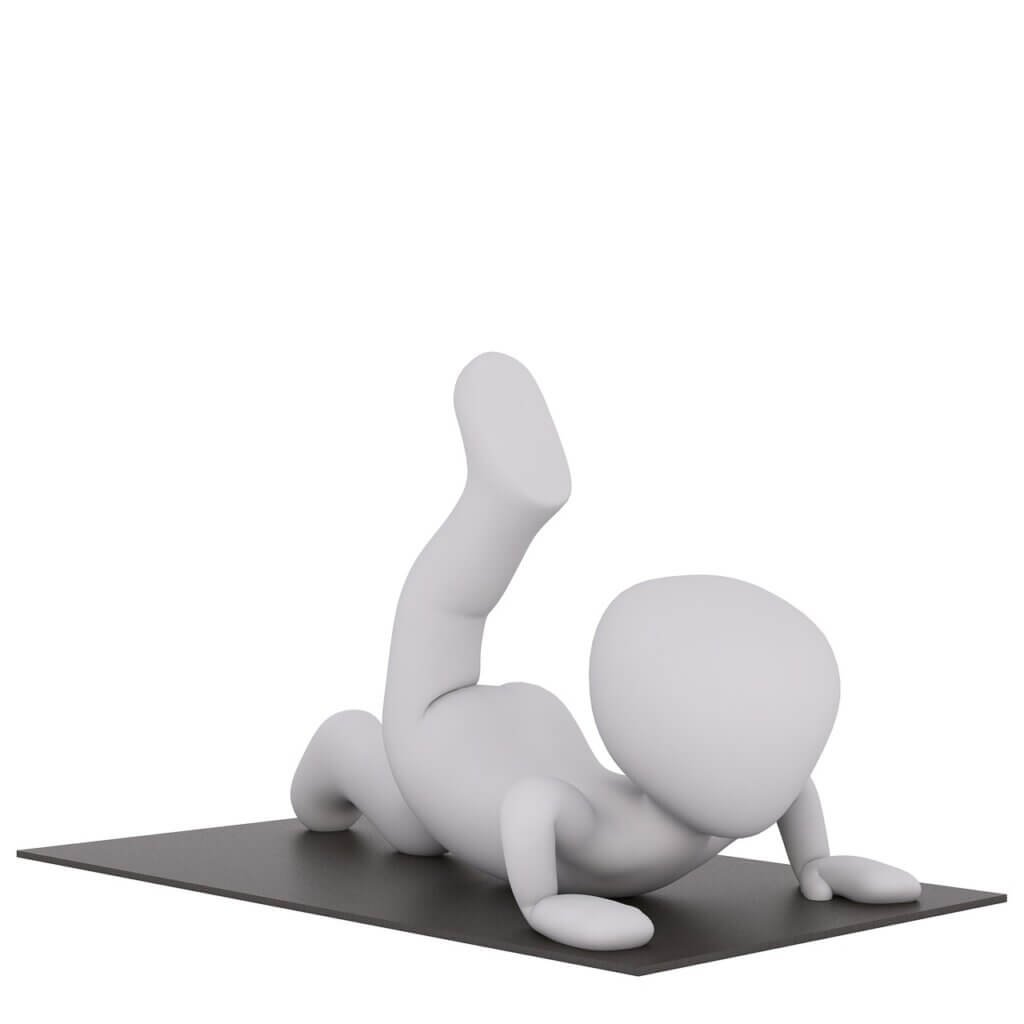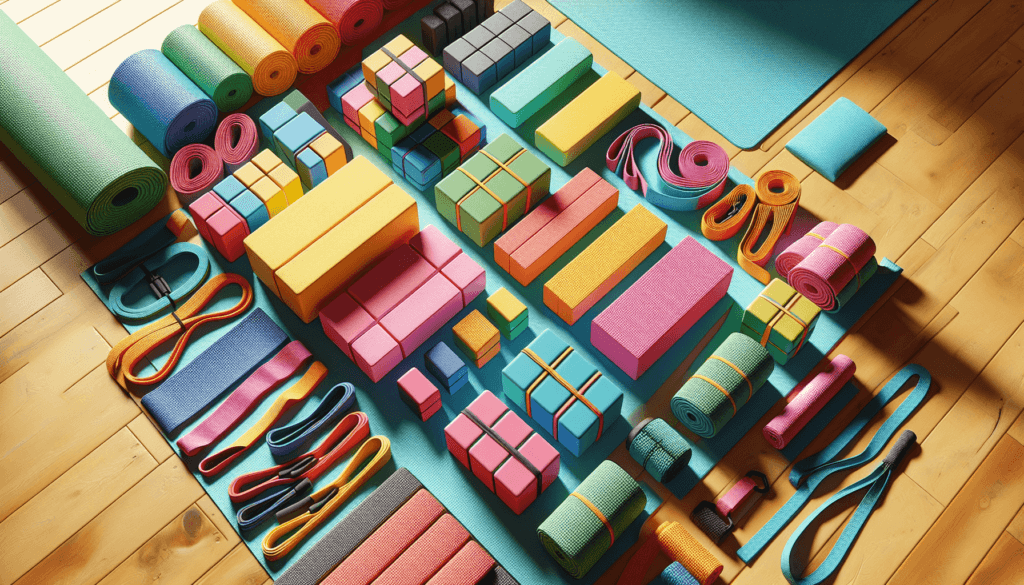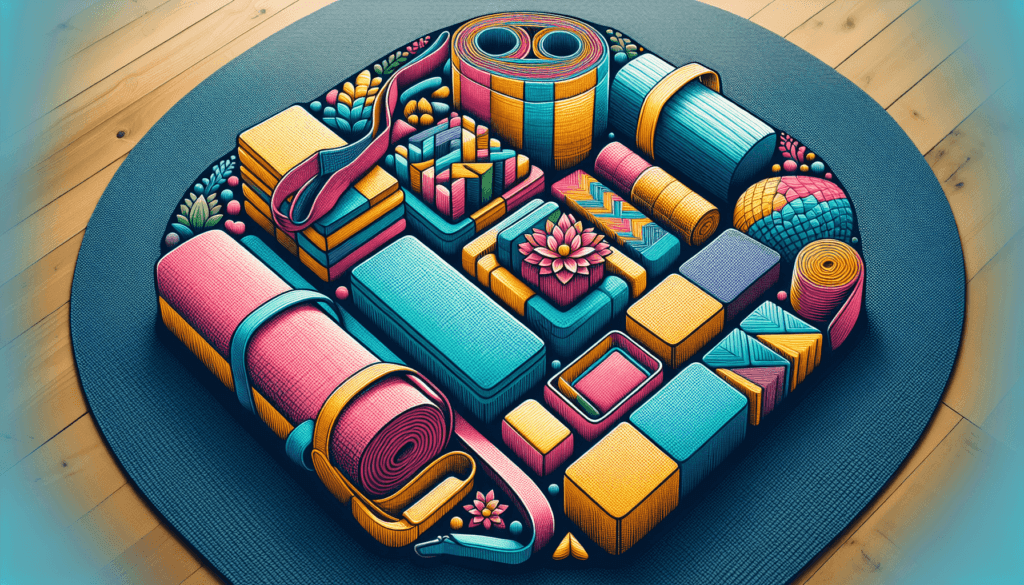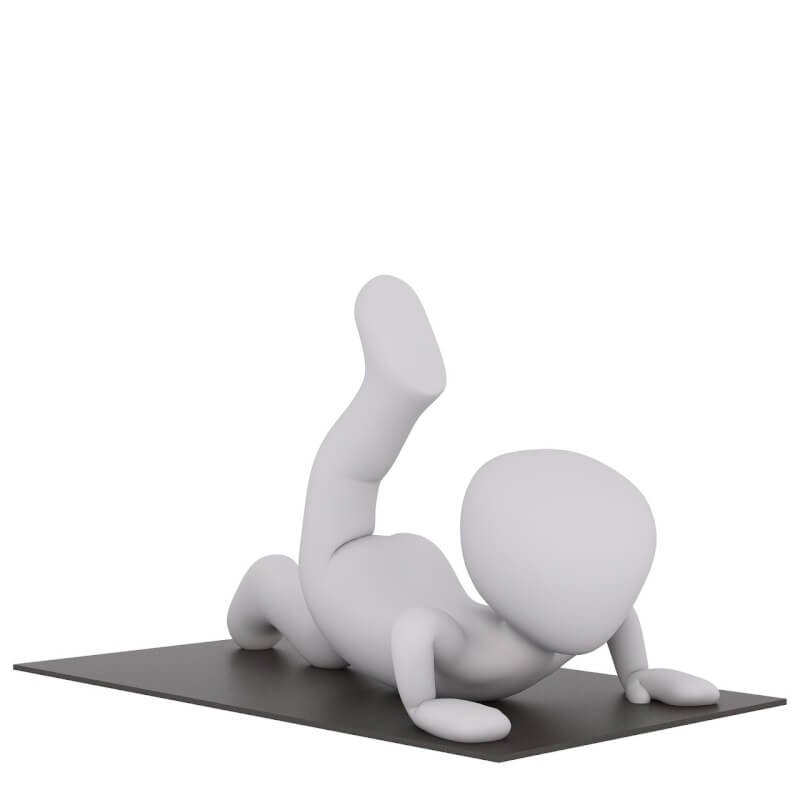In this helpful guide, you will discover how to incorporate yoga blocks and straps into your practice, making your yoga journey more accessible and enjoyable. Whether you’re a beginner or have been practicing for a while, these props can provide the support you need to find balance, alignment, and deepen your stretches. With easy-to-follow instructions and tips, you’ll soon be able to enhance your flexibility, stability, and strength, unlocking a whole new level of progress on your yoga mat. Get ready to elevate your practice and experience the transformative benefits that yoga blocks and straps can bring.

What are Yoga Blocks?
Yoga blocks are tools commonly used in the practice of yoga to provide support and assistance in various poses. They are typically rectangular in shape and made from materials such as foam, cork, or wood. Yoga blocks come in different sizes, allowing for customization based on individual needs and flexibility levels. They are lightweight and portable, making them convenient to bring to yoga classes or for home practice.
Benefits of Using Yoga Blocks
Using yoga blocks can offer several benefits, especially for beginners or those with limited flexibility. Here are some of the advantages of incorporating yoga blocks into your practice:
1. Improved Alignment:
Yoga blocks help in achieving proper alignment by bringing the floor closer to you. Whether you are reaching for your toes in a forward fold or trying to lengthen your spine in a seated twist, the blocks provide a stable base and reduce the risk of strain or injury.
2. Increased Stability:
For individuals who struggle with balance or have weaker muscles, yoga blocks offer support and stability. They can be used as a prop to provide a solid foundation and prevent wobbling or toppling over during challenging poses.
3. Deepened Stretches:
By utilizing yoga blocks, you can modify poses and gradually work towards deeper stretches. The blocks provide a modified range of motion and create space where you may initially lack flexibility. This allows you to ease into the pose and gradually increase your flexibility over time.
4. Enhanced Strength Building:
Yoga blocks can be used to engage and activate specific muscle groups in various poses. By placing the block between your thighs or squeezing it with your arms, you can intensify the strength-building aspect of your practice.
5. Reduced Strain and Discomfort:
For individuals with injuries or chronic conditions, yoga blocks offer a gentle approach to modifying poses and reducing strain or discomfort. They can provide support to areas of the body that need it the most, allowing for a more comfortable and sustainable practice.
Choosing the Right Yoga Blocks
When selecting yoga blocks, it is important to consider your individual needs and preferences. Here are some factors to keep in mind:
1. Material:
Yoga blocks are available in different materials, each with its own unique qualities. Foam blocks are lightweight and provide cushioning, making them ideal for beginners. Cork blocks are sturdy and offer more stability, while wooden blocks are durable and provide a natural feel.
2. Size:
Yoga blocks come in various sizes, such as 3 inches, 4 inches, and 5 inches. The size you choose depends on your flexibility and comfort level. Beginners may benefit from starting with larger blocks and gradually transitioning to smaller ones as they progress in their practice.
3. Durability:
Consider the durability of the yoga blocks. Foam blocks are typically more prone to wear and tear compared to cork or wooden blocks, which tend to last longer. If you plan to use the blocks frequently or for intense practices, investing in a more durable material may be worth considering.
4. Comfort:
Ensure the yoga blocks you choose feel comfortable in your hands and provide a solid grip. It is important to have a secure grip on the blocks to maintain stability and prevent any accidents or injuries during your yoga practice.
Basic Yoga Block Positions
Yoga blocks can be used in various positions to assist and enhance your practice. Here are a few basic positions where yoga blocks can be utilized:
1. Seated Forward Fold:
Place a yoga block in front of you and rest your forehead or chest on it. This provides support and allows for a deeper stretch in the hamstrings and lower back.
2. Supported Bridge Pose:
Lie on your back with your knees bent and feet flat on the floor. Position a yoga block under your sacrum and allow your weight to rest on it. This helps to open the chest and stretch the front of the body.
3. Half Moon Pose:
Stand with one foot slightly in front of the other. Hold a yoga block in your lower hand and rest your bottom hand on it for stability as you lift your top leg parallel to the ground. This enables better balance and support during the pose.
4. Reclining Bound Angle Pose:
Sit with your knees bent and feet together, then gently lower your back onto a yoga block positioned under your shoulder blades. This allows the chest and shoulders to open up, facilitating a deeper stretch in the hips and groin area.

How to Use Yoga Blocks for Support
Yoga blocks can assist in providing support in a variety of poses. Here are some ways to incorporate them into your practice:
1. Standing Balancing Poses:
When practicing standing balancing poses such as Tree Pose or Warrior III, place a yoga block under your bottom hand for added stability. This allows you to focus on alignment and balance without worrying about toppling over.
2. Chest and Shoulder Openers:
In poses such as Camel Pose or Fish Pose, position a yoga block between your shoulder blades to support your upper body and ease strain on the neck and lower back. This helps in creating space and opening the chest and shoulders.
3. Modified Twists:
During seated or reclining twists, use a yoga block to prop up the hip or knee for added support and stability. This allows for a more gentle twist, reducing strain on the lower back and making the pose more accessible.
4. Deepening Hip Stretches:
In poses like Pigeon Pose or Seated Forward Fold, place yoga blocks under your hips or thighs to elevate the floor. This modification helps to gradually deepen the stretch and reduce strain on the knees or hips.
5. Arm Balances and Inversions:
For advanced practitioners, yoga blocks can be used as a stepping-stone towards more challenging arm balances and inversions. By gradually reducing the height of the blocks, you can build strength and confidence in these poses.
Yoga Poses with Blocks for Flexibility
Yoga blocks can be effectively used to improve flexibility. Here are a few poses where blocks can assist in increasing your range of motion:
1. Bridge Pose Variation:
Lie on your back with your feet flat on the floor and knees bent. Place a yoga block between your inner thighs and squeeze it as you lift your hips into Bridge Pose. This engages the inner thigh muscles and opens up the hips.
2. Standing Forward Fold Variation:
Stand with your feet hip-width apart and hold a yoga block in each hand. As you fold forward, allow the blocks to rest on the floor, shoulder-width apart. This modification helps to bring the floor closer to you and allows for a deeper stretch in the hamstrings and spine.
3. Extended Triangle Pose Modification:
In Extended Triangle Pose, place a yoga block on the ground next to your front foot. Rest your bottom hand on the block instead of the floor. This modification supports balance and stability, enabling you to lengthen the side body and deepen the stretch.
4. Pyramid Pose Variation:
From a forward fold, step one foot back into a high lunge position. Place a yoga block on either side of your front foot, adjusting the height as needed. Rest your hands on the blocks to support your upper body and allow for a deeper stretch in the hamstrings.

What are Yoga Straps?
Yoga straps are another commonly used prop in yoga practice. They are typically made of durable materials such as nylon or cotton and come in various lengths. Yoga straps have a buckle or loop at one end to secure grip and allow for easy adjustment.
Benefits of Using Yoga Straps
Incorporating yoga straps into your practice can offer several benefits. Here are some advantages of using yoga straps:
1. Improved Flexibility:
By using a yoga strap, you can gradually extend your reach and improve flexibility over time. Straps allow for a gentle and controlled approach to deepening stretches and expanding range of motion.
2. Correcting Alignment:
In poses where reaching certain body parts may be challenging, yoga straps can aid in aligning the body correctly. They provide a way to firmly hold onto limbs or feet, ensuring proper alignment while working towards greater flexibility.
3. Increased Stability:
For individuals with balance issues or limited mobility, yoga straps provide stability and support. They can be used as a tool to maintain balance and avoid strain on weaker muscles or joints during standing or balancing poses.
4. Enhanced Relaxation:
In restorative or yin yoga practices, yoga straps can be used to support the body in gentle, passive stretches. This allows for a deeper sense of relaxation and release, particularly in poses where it may be challenging to hold the position for an extended period.
5. Assisting in Challenging Poses:
Advanced poses such as binds or arm balances often require greater flexibility and strength. Yoga straps can assist in achieving these poses by providing support and easing the strain on the body. They allow for a gradual progression towards the full expression of the pose.
Choosing the Right Yoga Strap
When selecting a yoga strap, consider these factors to ensure it suits your practice:
1. Length:
Yoga straps come in different lengths, typically ranging from 6 to 10 feet. Choosing the appropriate length depends on your height, body proportions, and intended use. Longer straps offer more versatility, allowing for variations in poses and adjustments.
2. Material:
Yoga straps are commonly made of nylon or cotton. Both materials are durable and provide a secure grip. Nylon straps tend to be more durable and resistant to wear and tear, while cotton straps offer a softer texture and can be more comfortable for some practitioners.
3. Buckle or D-Ring:
Consider whether you prefer a strap with a buckle or a D-ring closure. Buckle closures are adjustable and allow for a secure hold, while D-ring closures offer easy and quick adjustments.
4. Width:
Yoga straps are typically available in widths of 1 inch or 1.5 inches. The wider strap may be more comfortable for holding onto during intense stretches or when weight is applied, while the narrower strap offers more flexibility and ease of use for different poses.
Different Ways to Use Yoga Straps
Yoga straps can be used in various ways to enhance your practice. Here are a few common uses for yoga straps:
1. Bound Angle Pose:
Sit on the floor with the soles of your feet together and wrap the yoga strap around your feet. Hold onto the strap and gently press your elbows towards your legs, allowing the strap to assist in deepening the stretch.
2. Seated Forward Fold:
Extend your legs in front of you and wrap the yoga strap around the balls of your feet. Grasp the strap firmly and gently hinge forward from the hips, using the strap to reach further and deepen the stretch in the hamstrings and spine.
3. Shoulder Opener:
Stand with your feet hip-width apart and hold the yoga strap with a wide grip. Raise your arms overhead and allow the strap to hang in a U-shape behind your back. With one hand on each side of the loop, gently draw your hands apart, opening the chest and stretching the shoulders.
4. Headstand Preparation:
Loop the yoga strap around your upper arms, just above the elbows. As you come into a supported headstand, press the arms into the strap to engage the shoulder muscles and support your inversion. This enables better stability and control during the pose.
5. Standing Side Stretch:
Hold the yoga strap overhead, with your hands wider than shoulder-width apart. Lean towards one side, keeping the strap taut, and feel the stretch in the side body. This allows for a deeper stretch and extension.
In conclusion, yoga blocks and straps are valuable tools that can enhance your yoga practice in numerous ways. By providing support, stability, and assistance in achieving proper alignment and deeper stretches, these props enable practitioners of all levels to explore their practice with ease and comfort. Whether you are a beginner or an experienced yogi, incorporating yoga blocks and straps into your routine can enhance your flexibility, strength, and overall well-being. Embrace the benefits of these props and discover a world of possibilities on your mat. Happy yoga-ing!


